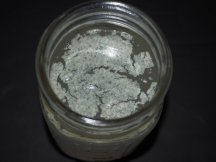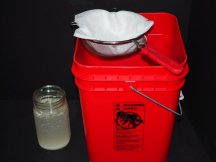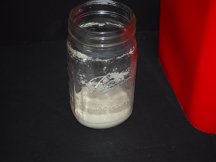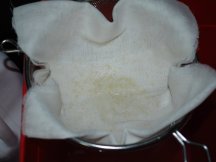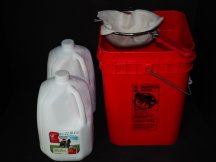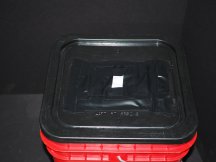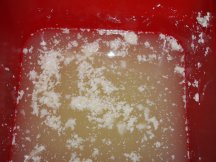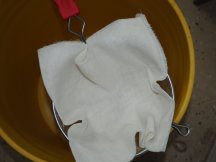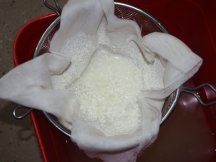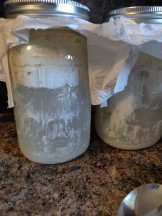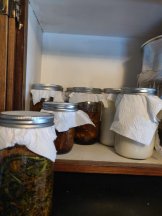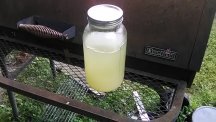LAB Culture (Lactic Acid Bacteria)
What Are Lactic Acid Bacteria? “Lactic acid bacteria” (LAB) refers to a large group of bacteria, rather than a single species or strain, that produce lactic acid as a by-product of digesting their food source (usually carbohydrates). The lactic acid accumulates to ferment or “pickle” the food, and LAB are capable of surviving in acidic (low-pH) environments. LAB are widespread in nature and are beneficial probiotics in our digestive systems. They are among the most important groups of microorganisms used in food fermentation, contributing to the taste and texture of fermented products and inhibiting food spoilage caused by other microorganisms. LAB are responsible for the production of yogurt, cheese, cultured butter, sour cream, sausage, kimchee, olives, and sauerkraut (Nordqvist 2004).
Be sure to wash, rinse, and dry all your equipment. Try to keep the process free of foreign debris and contaminants.
Step One
Wash rice grains and collect the cloudy water. I do this by placing 2 cups of rice into a mason jar with 2 cups of RO water and shaking it for 5 minutes. I will be making a double batch but will keep each jar separate until the last stage today.
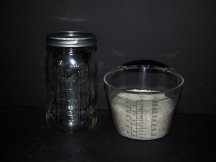
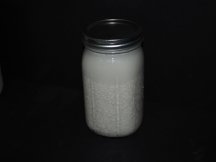
Step Two
Strain the Fill a clean glass jar about 2/3 full with rice rinse water.
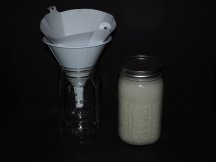
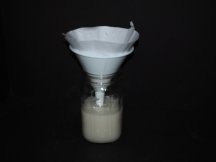
This is where I will combine my two batches
I am over 2/3 full but just be sure to leave at least an inch of room between the liquid and the top of the jar. You will get some water evaporation over the next 3+ days
Step Three
Cap it with a cheesecloth or breathable cloth. Butcher's paper or a paper towel will also work. I use the screw lid but you can also use a rubber band to secure the top. Our main goal is to keep large pests out like flies and ants. The microbes we are looking to culture are in the air and will find their way into the jar. Store at room temperature away from direct light. I tuck the jar away in the back of a kitchen cabinet and we will wait for 3 - 5 days for the liquid to separate. You may see some mold form on the top of the water, This is normal. Do not shake or move the jar during this stage.

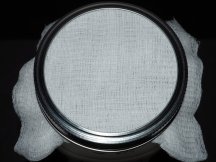
What Are Lactic Acid Bacteria? “Lactic acid bacteria” (LAB) refers to a large group of bacteria, rather than a single species or strain, that produce lactic acid as a by-product of digesting their food source (usually carbohydrates). The lactic acid accumulates to ferment or “pickle” the food, and LAB are capable of surviving in acidic (low-pH) environments. LAB are widespread in nature and are beneficial probiotics in our digestive systems. They are among the most important groups of microorganisms used in food fermentation, contributing to the taste and texture of fermented products and inhibiting food spoilage caused by other microorganisms. LAB are responsible for the production of yogurt, cheese, cultured butter, sour cream, sausage, kimchee, olives, and sauerkraut (Nordqvist 2004).
Be sure to wash, rinse, and dry all your equipment. Try to keep the process free of foreign debris and contaminants.
Step One
Wash rice grains and collect the cloudy water. I do this by placing 2 cups of rice into a mason jar with 2 cups of RO water and shaking it for 5 minutes. I will be making a double batch but will keep each jar separate until the last stage today.


Step Two
Strain the Fill a clean glass jar about 2/3 full with rice rinse water.


This is where I will combine my two batches
I am over 2/3 full but just be sure to leave at least an inch of room between the liquid and the top of the jar. You will get some water evaporation over the next 3+ days
Step Three
Cap it with a cheesecloth or breathable cloth. Butcher's paper or a paper towel will also work. I use the screw lid but you can also use a rubber band to secure the top. Our main goal is to keep large pests out like flies and ants. The microbes we are looking to culture are in the air and will find their way into the jar. Store at room temperature away from direct light. I tuck the jar away in the back of a kitchen cabinet and we will wait for 3 - 5 days for the liquid to separate. You may see some mold form on the top of the water, This is normal. Do not shake or move the jar during this stage.


Last edited:


